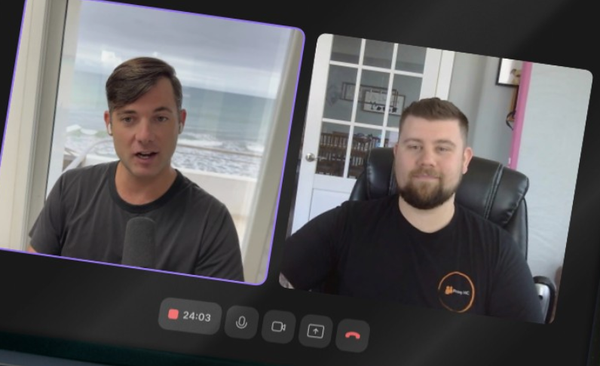Enhancing Advanced Practice Onboarding & Orientation

Enhancing Advanced Practice Onboarding & Orientation
Starting the search for the Advanced Practice Professionals (APPs) your healthcare facility requires begins with recruitment. However, the critical link between recruitment and retention is the onboarding and orientation phase. Some healthcare organizations have established elaborate systems, while others may offer minimal structure to support the transition into advanced practice roles. Improving onboarding and orientation not only increases job satisfaction and retention but also enhances patient care outcomes. Let’s explore some key challenges and strategies that healthcare facilities and agencies can employ to better the onboarding and orientation experience for these professionals.
Top 5 Challenges Affecting Effective Orientation and Onboarding
Orientation is the first step in onboarding, which is essential in providing advanced practice professionals with the necessary knowledge and resources to become effective team members. A robust onboarding system ensures APPs are well-versed in roles, responsibilities, workflows, and policies while fostering strong relationships within the organization. However, many facilities face challenges during the onboarding process.
1. Facilities Rush the Onboarding and Orientation Process
Thorough onboarding is crucial for integrating APPs into your team. When onboarding is rushed, it creates setbacks for both the provider and the healthcare facility. Many organizations, eager to quickly onboard new professionals to ease staffing pressures and see patients, may speed through the process, leading to negative outcomes often within the first week of the new provider’s arrival. Healthcare facilities such as Kaiser Permanente (Kaiser Permanente) have extensive onboarding programs, while others may lack structure altogether. Preparation and support can vary widely between organizations.
2. Agencies Don’t Emphasize the Need for a Detailed Process
Agencies may sometimes overlook the importance of coordinating a detailed process for onboarding. At times, agencies may not emphasize the need for detailed communication with providers, causing delays or confusion. Agencies should prioritize clear, consistent communication with facilities to ensure a smooth transition for new hires. Agencies like LocumTenens.com (LocumTenens) are committed to making this process seamless by providing templates and checklists to ensure providers are well-prepared.
3. APPs Aren’t Given All the Necessary Information Before Taking an Assignment
APPs often start assignments without all the necessary details, which can create unnecessary stress. If critical information is overlooked, providers might feel unprepared and disconnected from the team. Organizations like Trustaff (Trustaff) stress the importance of delivering all pertinent details upfront to ensure smooth transitions, which can reduce the feeling of isolation and increase retention rates. By providing full, detailed information before the assignment, APPs feel confident and welcome from day one.
4. Insufficient Formal EMR Training
A significant issue many new APPs face is inadequate training on Electronic Medical Records (EMR) systems. With varying levels of experience, APPs often encounter difficulties when they aren’t properly trained on the facility’s system. For instance, facilities may assume that their EMR is user-friendly, but new providers may struggle without sufficient training. Cerner (Cerner) and Epic Systems (Epic) are two prominent EMR providers that healthcare facilities must consider when implementing comprehensive training for new hires. This could prevent complications like providers being perceived as slow or not documenting properly, which could lead to assignment cancellations.
5. Expectations, Protocols, and Workflows Not Communicated Upfront
A lack of clarity around expectations and workflows can leave new APPs feeling lost. Facilities vary in terms of their expectations for patient load, workflow, and internal protocols. For example, some may expect APPs to see one patient every 60 minutes, while others might have different standards. Establishing clear expectations from day one helps providers acclimate more quickly and perform their roles more effectively. Organizations like Medix (Medix) have worked to streamline these processes by providing structured orientations that set clear expectations for all providers.
How Facilities Can Enhance AP Onboarding & Orientation
The onboarding process is essential not only for recruiting but also for retaining APPs, whether temporary or permanent. Facilities should focus on creating a welcoming atmosphere and providing a comprehensive onboarding experience. Here are some recommendations:
- Provide a comprehensive orientation/welcome packet before the start date, detailing entry instructions, parking, and key contacts.
- Assign a representative to greet new hires on their first day.
- Present a detailed itinerary with specific orientation activities.
- Complete all administrative paperwork in advance, including practice protocols and policies.
- Review expectations, policies, and procedures during orientation.
- Grant access to all systems and issue badges on the first day.
- Finalize communication preferences, particularly for on-call situations, and clearly outline workflows and protocols.
- Provide EMR training tailored to the facility’s system.
It’s also crucial for APPs to connect with their team during the onboarding phase. Introducing them to colleagues and assigning a mentor can offer support and help them settle into the new environment.
How Agencies Can Enhance AP Onboarding & Orientation
Agencies play a vital role in ensuring that APPs have a positive experience from the moment they are placed. Agencies like CompHealth (CompHealth) and Cross Country Locums (Cross Country Locums) should ensure that all logistics are arranged before the assignment begins:
- Collect all relevant details from the facility to provide to the provider.
- Confirm that travel arrangements are finalized and provide support for any accommodation needs.
- Ensure the provider has all necessary information, such as local amenities, healthcare regulations, and cultural nuances.
- Provide documents on local attractions, grocery stores, and other helpful resources to make the transition smoother for the provider.
By ensuring these steps are taken, agencies can enhance the overall onboarding experience and improve the retention of APPs.
Organizations like GoodWork (GoodWork) can assist healthcare systems in this transition by streamlining the hiring process, verifying nurse credentials, and easing the administrative burdens of staffing.





